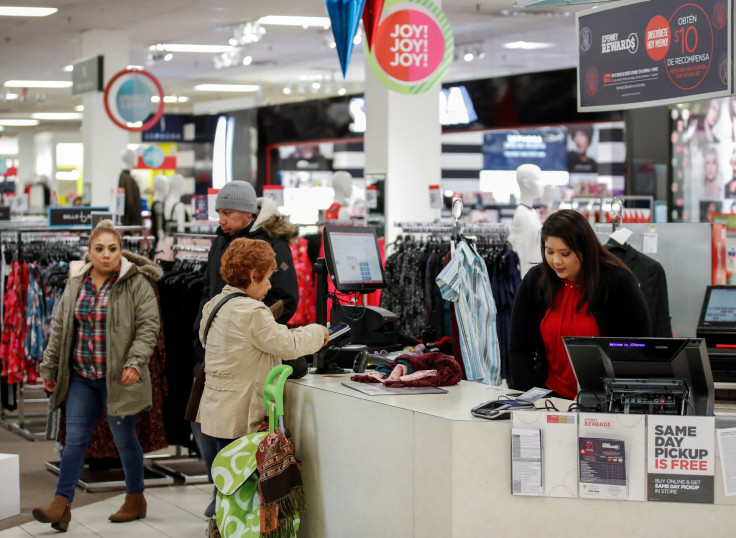US Consumer Spending Picking Up, Gasoline Prices A Burden

WASHINGTON - U.S. retail sales rose moderately in April as rising gasoline prices cut into discretionary spending, but consumer spending appeared on track to accelerate after slowing sharply in the first quarter.
Stronger consumer spending supports economists’ expectations that the Federal Reserve will raise interest rates next month. The U.S. central bank lifted borrowing costs in March and has forecast at least two more rate hikes for this year.
“The steady spending results today on the part of consumers will keep the Fed on course to raise interest rates at a gradual pace with the next rate hike likely at the June meeting,” said Chris Rupkey, chief economist at MUFG in New York.
The Commerce Department said on Tuesday retail sales rose 0.3 percent last month after surging 0.8 percent in March. April’s increase in retail sales was in line with economists’ expectations. Retail sales in April increased 4.7 percent from a year ago.
Excluding automobiles, gasoline, building materials and food services, retail sales rose 0.4 percent last month after increasing 0.5 percent in March. These so-called core retail sales correspond most closely with the consumer spending component of gross domestic product.
The U.S. dollar .DXY was trading higher against a basket of currencies after the data. U.S. stock indexes fell while yields on U.S. Treasuries rose.
As a result of April’s increase in core retail sales, economists estimated that consumer spending, which accounts for more than two-thirds of U.S. economic activity, was growing at a 2.5 percent annualized rate in the second quarter. Consumer spending grew at a 1.1 percent pace in the January-March quarter, which was the slowest in nearly five years.
Economists blamed the slowdown in consumer spending, which held back first-quarter economic growth to a 2.3 percent pace, on delays in processing tax refunds. They also said clean-up efforts in the wake of back-to-back hurricanes in late 2017 had pulled forward spending into the fourth quarter.
While consumer spending is picking up, the rise could be limited by gasoline prices, which have risen about 31 cents per gallon this year. The gasoline price rise, if sustained, could blunt the impact of lower income taxes on consumer spending.
HIGHER GASOLINE PRICES
“Looking ahead, the consumer now faces the added burden of higher gasoline prices,” said Michael Feroli, an economist at JPMorgan in New York.
Gasoline prices are near $3.00 per gallon, according to data from the U.S. Energy Information Administration. With crude oil prices rising after President Donald Trump’s decision last week to pull the United States out of an international nuclear deal with Iran and vow to put tough sanctions on Tehran, gasoline prices are likely to remain elevated.
In April, auto sales edged up 0.1 percent after accelerating 2.1 percent in March. Receipts at service stations jumped 0.8 percent, reflecting higher gasoline prices, following a 0.3 percent gain in March.
Sales at restaurants and bars fell 0.3 percent, the largest drop since February 2017. Americans also cut back on spending on hobbies. Receipts at sporting goods and hobby stores dipped 0.1 percent last month, matching March’s drop.
Consumers also scaled back spending on personal grooming, with sales at health and personal care stores falling 0.4 percent last month. But households increased spending at furniture, building material and clothing stores last month.
They also boosted online purchases, but sales at electronics and appliance stores fell.
A survey from the New York Fed on Tuesday showed factory activity in New York State gained momentum in May amid strong growth in new orders. Manufacturers reported paying more for raw materials, with the survey’s prices paid index accelerating to its highest level since 2011.
But a measure of prices received by manufacturers rose marginally, suggesting inflation would probably continue to increase at a moderate pace.
Reuters
Reporting by Lucia Mutikani; Editing by Paul Simao

© Copyright Thomson Reuters 2024. All rights reserved.




















